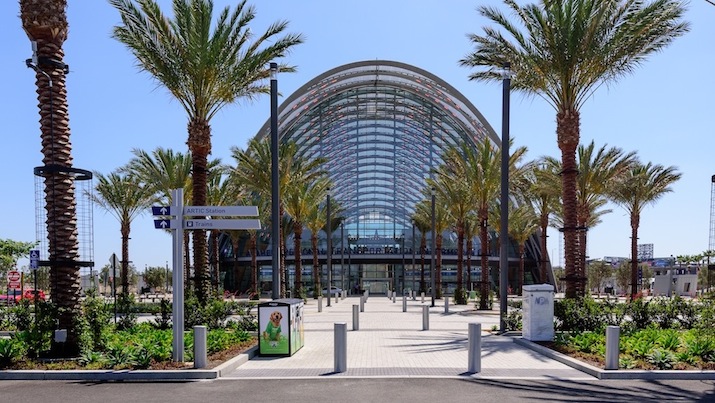HOK, the international architecture, engineering, and planning firm, will promote its President and 25-year company veteran Bill Hellmuth, AIA, to the position of Chief Executive Officer, effective April 19.
Hellmuth, who is the nephew of the firm’s founder George Hellmuth (its initials are an acronym for Hellmuth, Obata & Kassabaum), has been President since 2005. When he steps into the CEO post, he will replace Patrick MacLeamy, FAIA, LEED AP, who has served as HOK’s chief for 13 of the 49 years he’s been with the firm.
MacLeamy will remain as HOK’s chairman. During his HOK career, MacLeamy has overseen the establishment of several HOK regional offices in the U.S. and Asia. He has held leadership roles on several landmark HOK projects, including the Moscone Convention Center in San Francisco and King Khalid International Airport in Riyadh, Saudi Arabia.
In a statement, Hellmuth identified HOK’s “sweet spot” as “the intersection of design excellence and thought leadership, combining design leadership with expertise in specific markets and building types around the world.”
HOK has 1,800 employees (it is 100% employee owned) in 24 offices worldwide. It has current projects in 75 countries.
Hellmuth has a total of 37 years experience in the architecture industry, including a stint with Skidmore, Owings and Merrill. He joined HOK’s St. Louis office in 1991, and two years later was promoted to lead HOK’s Washington, D.C. office. He joined the firm’s executive committee in 2004.
A strong advocate for sustainable design, Hellmuth began integrating sustainability into every project before LEED certification became a benchmark. In 2014 he was named Senior Fellow of the Design Futures Council, and a GSA Design Excellence Peer.
Related Stories
Building Team | Feb 24, 2015
Call for entries: 2015 Giants 300 survey
The annual Giants 300 Report ranks the top AEC firms in commercial construction, by revenue.
Industrial Facilities | Feb 24, 2015
Starchitecture meets agriculture: OMA unveils design for Kentucky community farming facility
The $460 million Food Port project will define a new model for the relationship between consumer and producer.
University Buildings | Feb 23, 2015
Future-proofing educational institutions: 5 trends to consider
In response to rapidly changing conditions in K-12 and higher education, institutions and school districts should consider these five trends to ensure a productive, educated future.
Office Buildings | Feb 23, 2015
The importance of quiet and the consequences of distraction
Recent work style studies show that the average knowledge worker spends 25-35% of their time doing heads-down focused work. Once thrown off track, it can take some 23 minutes for a worker to return to the original task.
Modular Building | Feb 23, 2015
Edge construction: The future of modular
Can innovative project delivery methods, namely modular construction, bring down costs and offer a solution for housing in urban markets? FXFOWLE’s David Wallance discusses the possibilities for modular.
| Feb 23, 2015
6 trends changing the way city dwellers live
Across the cultural grid, from food to retail to transportation, America's urban areas are already undergoing a major metamorphosis. Here are the six major trends shaping our cities, from Fast Company.
Green | Feb 23, 2015
State of the green union, and the next big shift in sustainability
The history of the green movement offers cues that we are on the precipice of another significant shift in the green union.
| Feb 23, 2015
Where are the iconic green buildings?
What does a green building look like? How would you know one if you saw one? Maybe a trivial question to some, but of great interest to architects, designers, and other members of the Building Team as the rapid evolution of sustainable buildings continues apace.
Sports and Recreational Facilities | Feb 21, 2015
Pumped-up recreation centers help build body, mind, and spirit
Adopting facility layouts from Asian and European models, today’s sports and recreational buildings are becoming social hubs that accommodate a variety of community needs.
University Buildings | Feb 20, 2015
Penn strengthens campus security by reviving its surrounding neighborhood
In 1996, the University of Pennsylvania’s sprawling campus in Philadelphia was in the grip of an unprecedented crime wave. But instead of walling themselves off from their surrounding neighborhoods, the school decided to support the community.















